

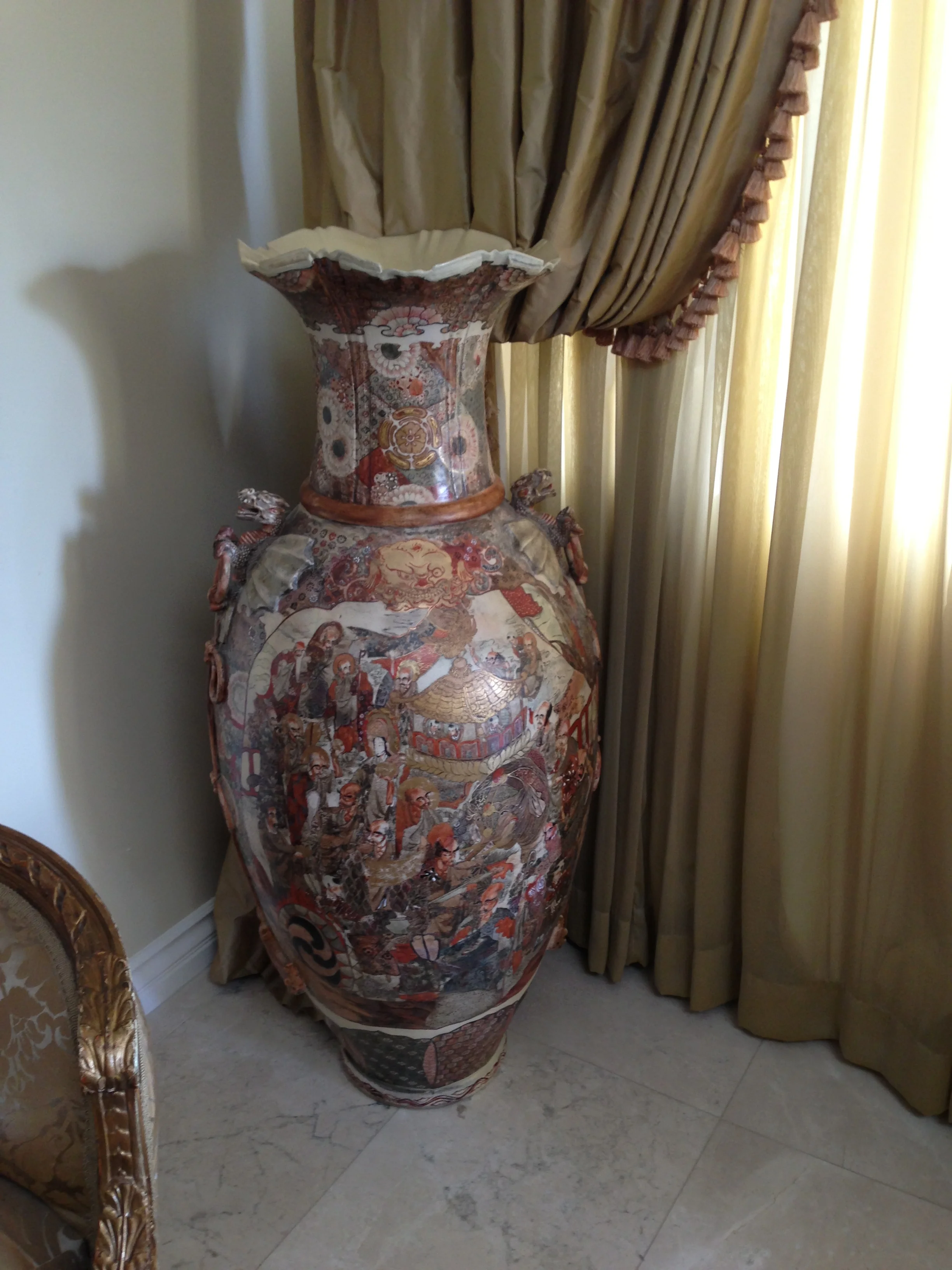

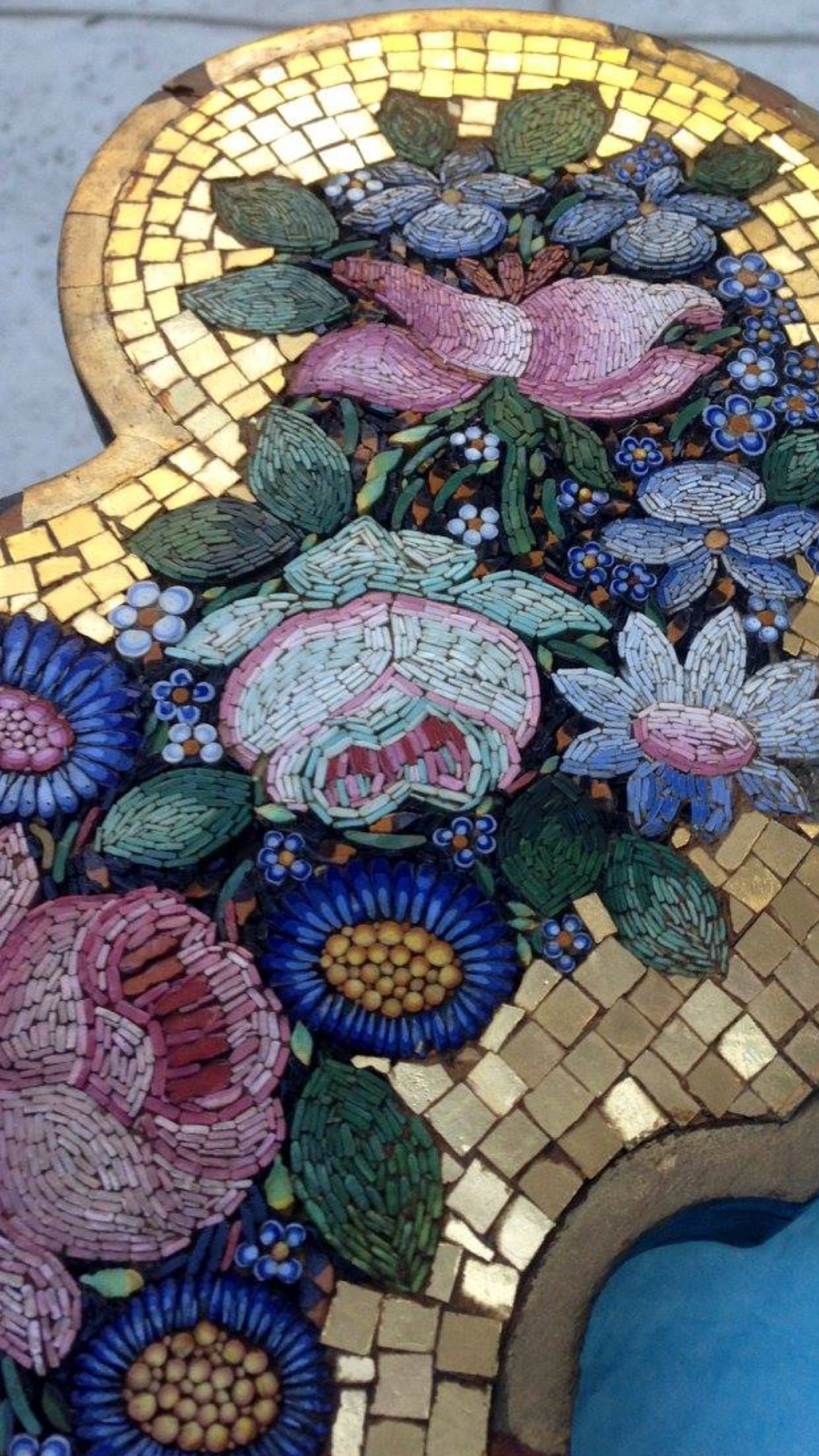
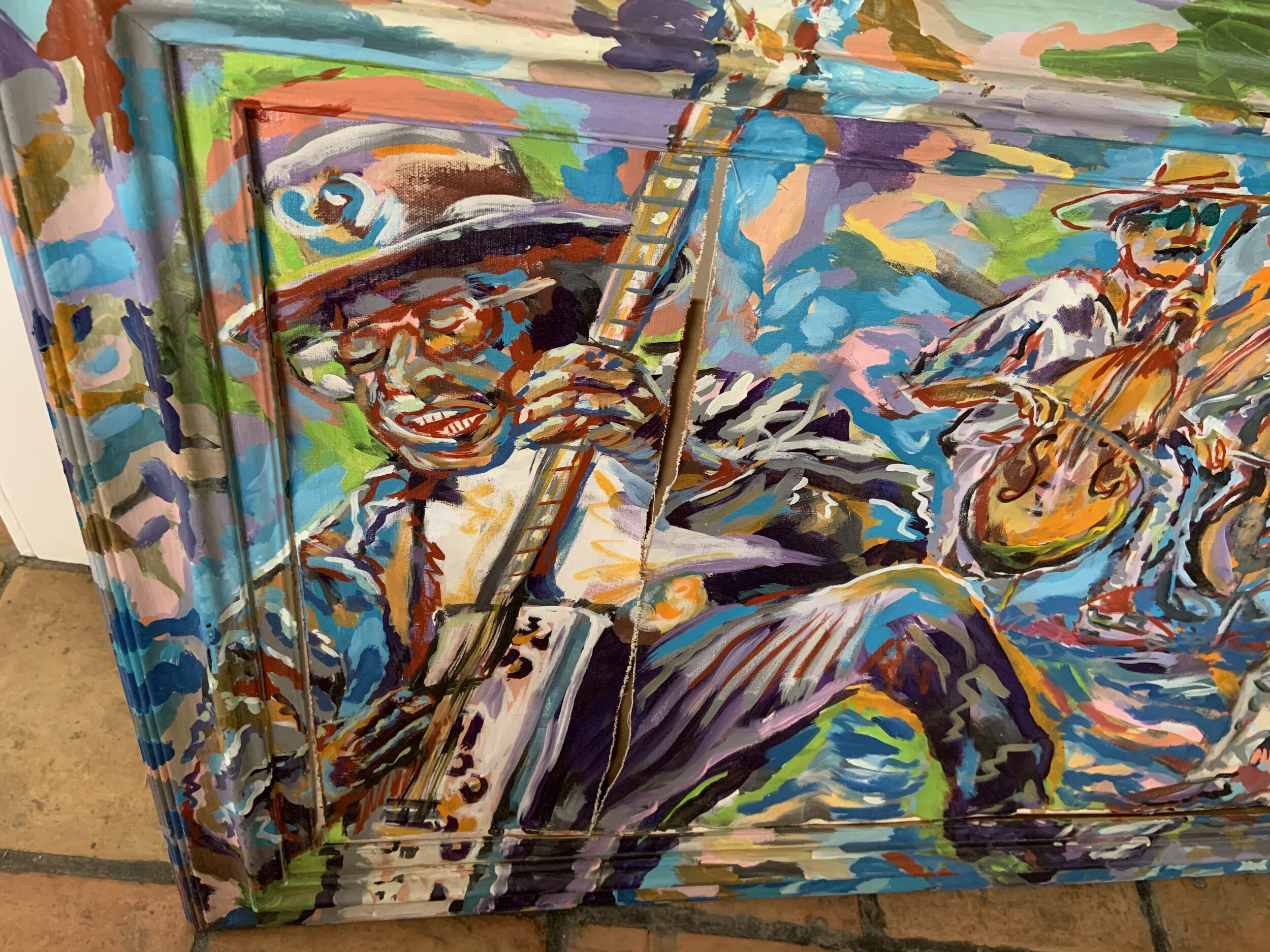
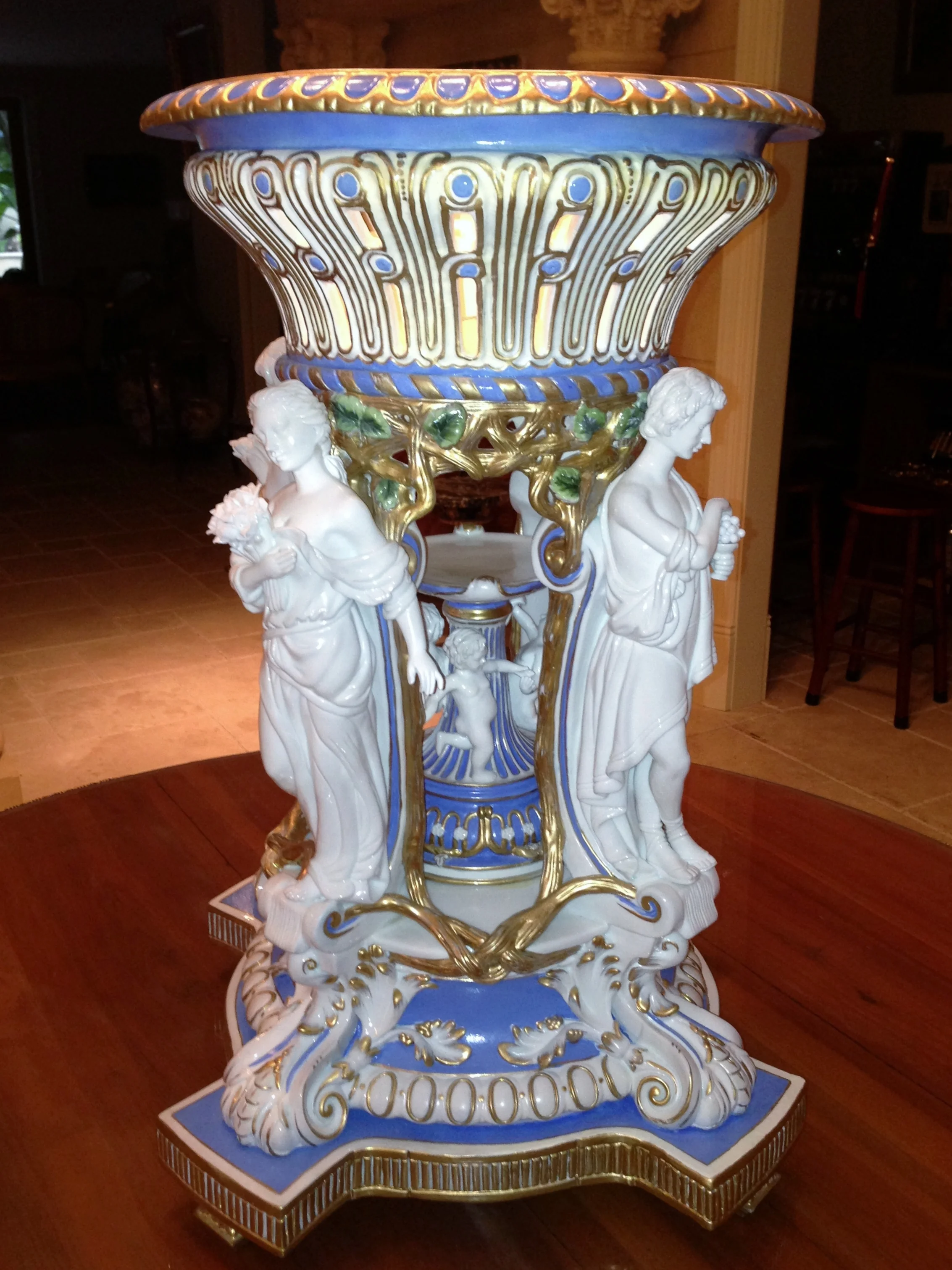
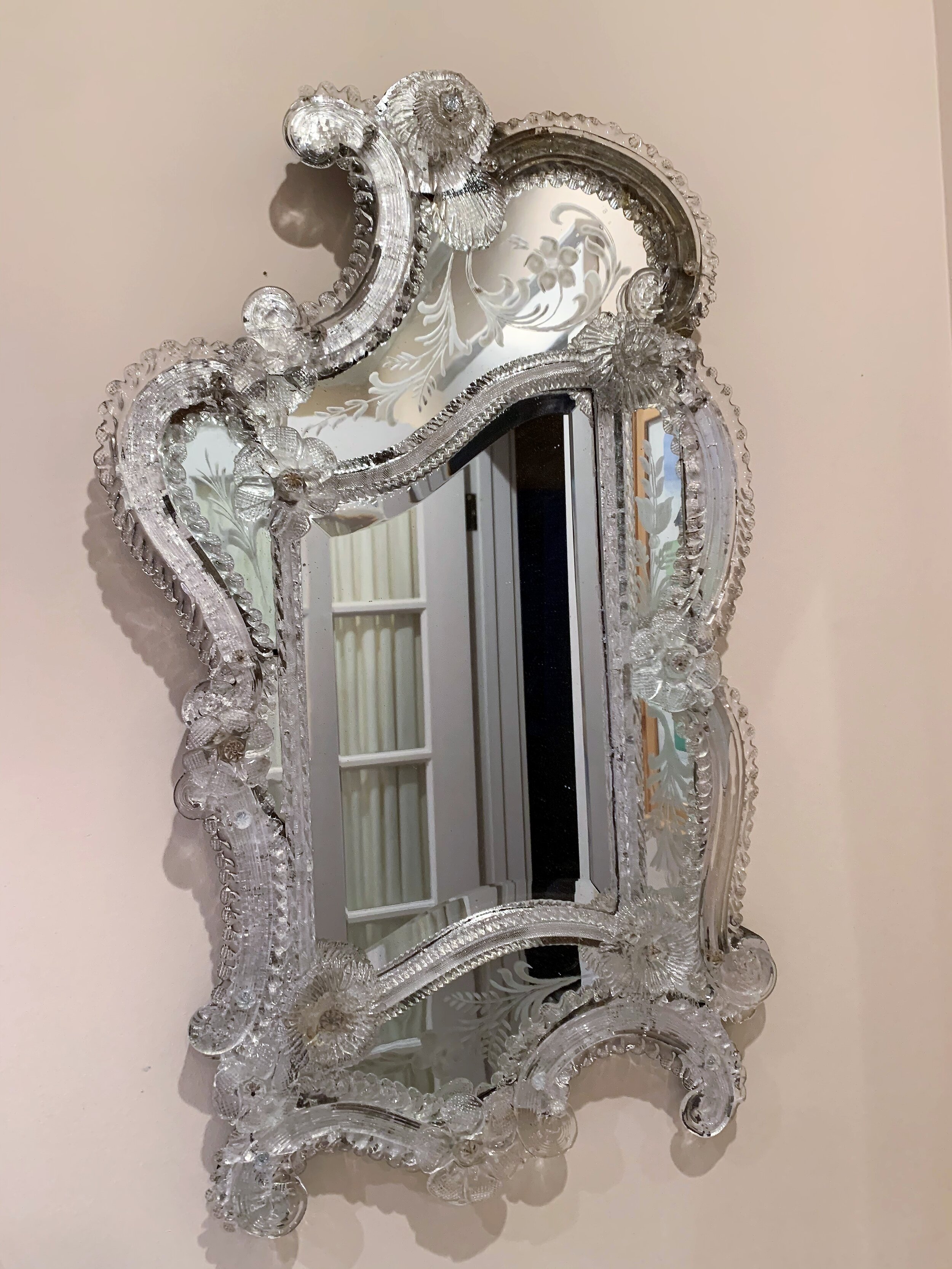

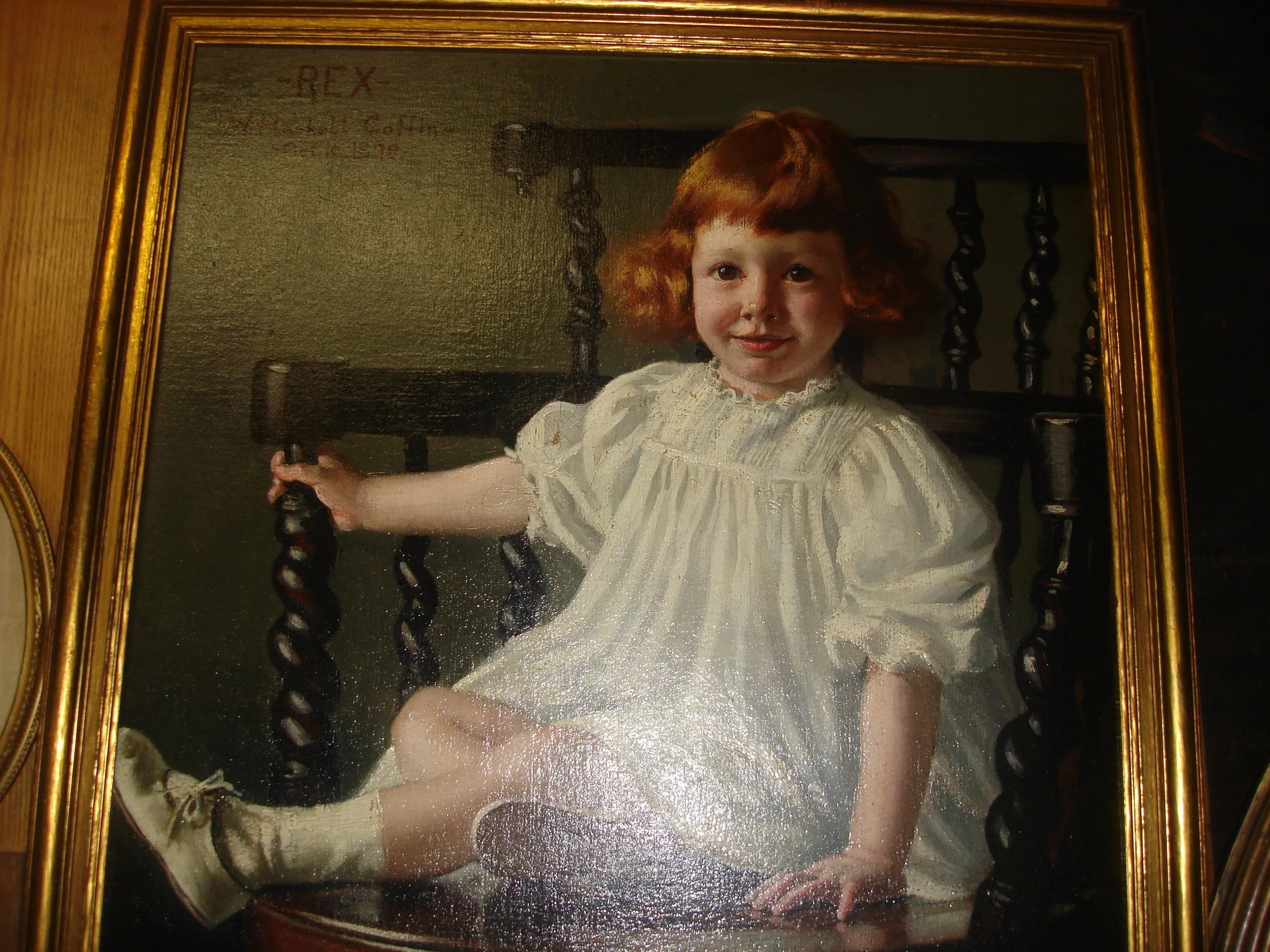





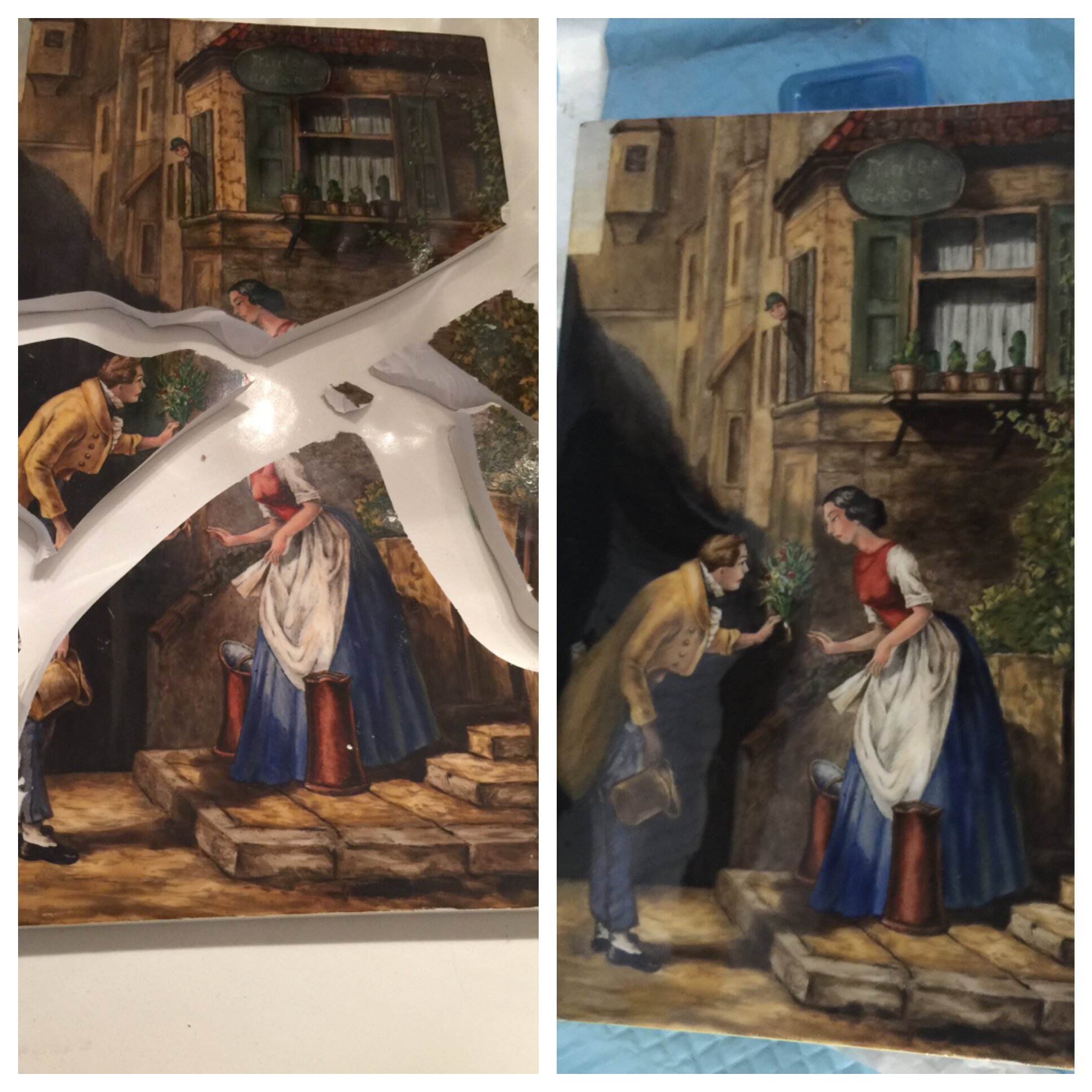


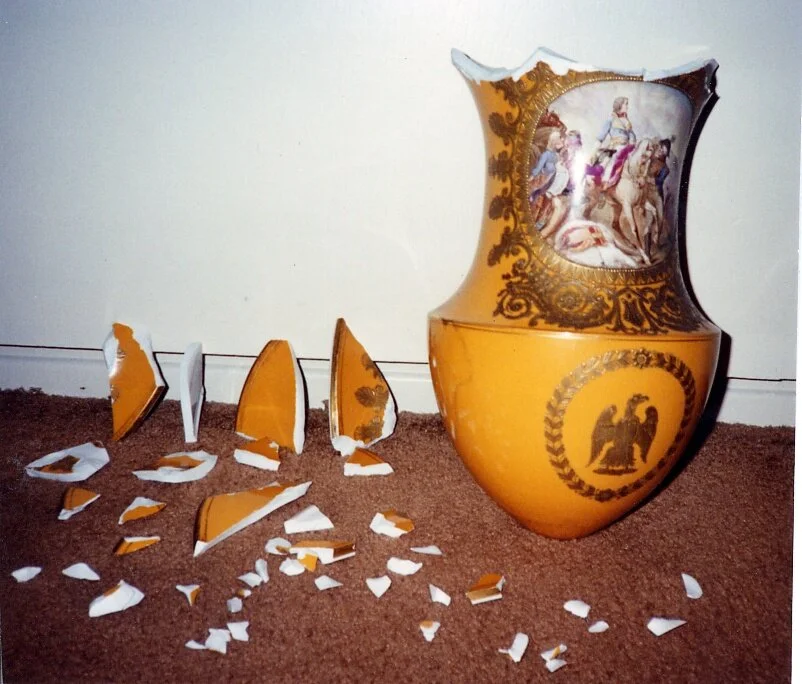
To receive a complimentary estimate and a swift reply, kindly send a text to 818-468-0503 with a short summary, rough dimensions, and several photos.






Professional cleaning, cuts and perforations, re-touching and color matching, painting canvas repair, stretching and flattening, removal of old varnish, paint restoration
Replacing or re-creating of missing parts, carving, touch ups.
Art frames, antique furniture, icons, mirrors. Age-matching.
Fixing and repair of missing parts, chips. Re-creation of chipped parts or broken pieces. Gap-filling, glaze touch-ups, sealing, dents. Color matching
Sculptures, stone, glass, ivory, resin, terra cotta, marble, fresco and other visual arts.
Re-creating of missing/broken parts, repair of chips, dents, paint and finishing
Pottery and ceramic, enamel plates, or other object using Kintsugi Repair techniques

Professional restoration of porcelain and ceramic.

invisible restoration
Re-creation of chipped parts, gap-filling, sealing and color matching

Japanese Art Restoration
Glazed Terracotta Elephant Restoration
“Elza is a miracle worker!!
She has masterfully repaired 2 precious family heirlooms. She repaired a hole in an oil painting damaged during shipping from England, and completely rebuilt an antique mirror. She goes above and beyond... she is kind...she respects your art as if it were her own, and cares for it as such. My family will never trust anyone else. Thank you Elza for all you do!!”
“From the moment I met Elza I knew I had gone to the right place. Of course I did my homework first and read all the incredible reviews. I took several pieces to her and I had no idea that what she did was even possible. From cracked and broken 100 year old alabaster sculptures missing pieces, to antique pottery and broken antique carved italian wood, she performed miracles beyond humanly believable!! She did everything in a very timely manner and I am now a loyal customer. I can’t recommend her enough, she is very skilled at what she does.”
“I was distraught about the piece of my Alvar bas relief falling and breaking on the marble hearth below. I tried for two years to find someone who would try to fix it. I found her after two years, and she was willing to repair it. I hoped for the best. I got it back today, and I could not be more thankful and appreciative of her. She repaired the piece and today to put it back with the rest of the pieces, I never thought anyone could restore it, and I would recommend her to anyone. She had to make a small piece to make it perfect. Fortunately she did the top perfectly and the sides are perfect as well, and she did not know that the sides would be visible. The piece was $12000 almost five decades ago when I purchased it , and it was worth nothing without it being repaired. She did it beyond my fondest dreams. It is a beautiful image. I think it was the masterpiece of Alvar’s work, and I hope it is passed down in my family forever thanks to Elza’s magical work.”
“Elza was a lifesaver!!!! My mom’s cleaning lady accidentally broke a Lladro Spanish Dr. Statue while dusting on top of my mom’s piano. My parents got it years ago. The statue probably should not have been on top of piano but it was and my mom’s cleaning lady knocked it down , it broke in the boot and leg, and pieces went behind the piano and broke into many little pieces. The boot was broken in quite a few pieces. We could not put pieces together to make them fit and were really upset. I researched who could fix it and saw Elza’s site and how she could restore broken pieces even if some when we tried to see if it could be put back together , did not fit right. We were so upset and then I found Elza. She was amazing ! It does take some time but she is a true artist, a perfectionist and a pleasure. You can not even tell that the boot was broken. It is perfect. I think she had to put some kind of wire inside the boot to stand it up .But it is amazing what she did. You can’t even tell it ever was broken. I am so amazed and in awe. My mom is so happy. So I didn’t have to drive far into LA to find someone as she is here in Woodland Hills and does all kinds of restoration work . I would give her 10 stars if I could. Sue D Chatsworth Ca”
This unique porcelain plate was seriously damaged and required not only careful assembly, to not damage the exquisite image, but hours of work to ensure that restoration is invisible.
Plate is dated most likely more than 100 years, created by Royal Vienna which contains multiple elements of a very delicate illustration of women dancing to the music of an angel.
Restoration performed required approximately 80 hours of attaching all pieces together, several layers of various spay mixes, several layers of foundational paint and final details.
Difficult restoration process but at the end, beautiful porcelain plate came back to life with no visible blemishes, fully restored.
This large Chinese Porcelain Bowl was a beautiful piece which required many hours to reproduce the image inside the bowl and make it seamless.
Extremely difficult restoration due to the fact that vase broke into several dozen pieces resulting in more than 6 months restoration process.
This piece is most likely between 100 and 300 years old.
From Wikipedia:
Satsuma ware (薩摩焼 Satsuma-yaki) is a type of Japanese pottery originally from Satsuma Province, southern Kyūshū. Today, it can be divided into two distinct categories: the original plain dark clay early Satsuma (古薩摩 Ko-Satsuma) made in Satsuma from around 1600, and the elaborately decorated export Satsuma (京薩摩 Kyō-Satsuma) ivory-bodied pieces which began to be produced in the nineteenth century in various Japanese cities. By adapting their gilded polychromatic enamel overglaze designs to appeal to the tastes of western consumers, manufacturers of the latter made Satsuma ware one of the most recognized and profitable export products of the Meiji period.
Few hundred years old most likely, French Salon Table is a unique piece of art, with elaborate enamel plaquettes depicting French high society dated back to Napoleon
Most likely late 18th or early 19th century Venetian micro mosaic frame decorated with flowers and the Lion of Venice
Beautiful painting by Joseph Giri was damaged with a fairly large tear in the canvas. Restoration process required to:
Carefully disassemble the frame and the canvas
Stretch and flatten the canvas, over a period of multiple days
Stabilize the canvas
Repair this large tear
And then perform color matched retouching
Overall process took approximately 3 weeks from start to finish.
To learn more about Joseph Giri Artworks, please visit:
Beautiful piece with restoration needed in multiple parts of the frame, repairing damaged crystal silhouette as well as missing parts. Fairly extensive restoration process which took several weeks, but at the end, after extensive cleaning, looked stunning.
~
Elza is a miracle worker!!
She has masterfully repaired 2 precious family heirlooms. She repaired a hole in an oil painting damaged during shipping from England, and completely rebuilt an antique mirror. She goes above and beyond... she is kind...she respects your art as if it were her own, and cares for it as such.
My family will never trust anyone else. Thank you Elza for all you do!!
-Anna K-
~
Unique glass sculpture, Dancing Shaman by Susan Gott, was broken in half with multiple small pieces which required careful assembly.
See more about Susan Gott.
Painting cleaning requires a very careful approach to not damage the painting, therefore extreme caution is necessary, special cleaning chemicals and a lot of “courage”
Artist: William Haskell Coffin (American, 1878–1941)
Title: Portrait of Rex , 1898
Medium: oil on canvas
Size: 30 x 25 in. (76.2 x 63.5 cm.)
William Henry Coffin
William Henry "Haskell" Coffin was a painter and commercial artist who flourished in the early decades of the twentieth century. His work appeared on the cover of leading magazines in the United States and on posters that the US government commissioned.
Born: 1878, Charleston, SC
bas-relief. noun. sculpture in low relief, in which the forms project slightly from the background but no part is completely detached from it Also called (Italian): basso rilievo.
Royal Vienna ''The Admired Love'' Fine Painted Porcelain Tray
“Admiration”
Oil painting restoration is the process of repairing, preserving, and cleaning a painting that has been damaged, degraded or has become dirty over time. This can include cleaning and stabilizing the painting, repairing tears or losses in the canvas, inpainting (filling in areas of missing paint), removing discoloration or grime, and stabilizing the painting's structure. It is important to note that restoration should be done by a trained and experienced professional to ensure that the painting is not further damaged in the process. The goal of restoration is to return the painting to its original condition, or as close to it as possible, while preserving its historical and artistic value.
Typical restoration steps include:
Inspection and assessment: The first step in the oil painting restoration process is to thoroughly inspect and assess the condition of the painting. This includes identifying any damages, discolorations, or signs of deterioration.
Cleaning: The next step is to clean the painting, removing any dirt, grime, or other contaminants that have accumulated over time. This can be done using a variety of cleaning solutions and techniques, such as solvents, mild soaps, or specialized cleaning agents.
Retouching and inpainting: Once the painting has been cleaned, any areas of damage or loss will be retouched and in painted. This involves carefully filling in missing or damaged areas with paint that is as close to the original color and texture as possible.
Consolidation: After retouching and inpainting, the painting will be consolidated. This involves applying a thin layer of a consolidating agent, such as a wax or resin, to the surface of the painting to help stabilize it and prevent further deterioration.
Lining: The final step in the oil painting restoration process is to line the painting. This involves attaching a new canvas to the back of the original painting to provide additional support and stability. The new canvas is usually attached using a special adhesive and is carefully stretched and secured to prevent any warping or buckling.
Final varnish: After the painting has been lined, a final varnish is applied to the surface to protect it from further damage and enhance its appearance. This varnish can be either a traditional oil-based varnish or a more modern, water-based varnish, depending on the condition of the painting and the preferences of the restorer.
4727 Dunman Ave
Woodland Hills, CA 91364
(by appointment only)
phone: (818) 468-0503
email: elzababiner@yahoo.com
To assess and provide a high level estimate as well as a timeframe, please provide a few pictures via text message or an email. For paintings, please include the front and the back of the piece, as well as approximate size.
Hours:
Sunday: Closed
Monday: 10:00 AM–5:00 PM
Tuesday: 10:00 AM–5:00 PM
Wednesday: 10:00 AM–5:00 PM
Thursday: 10:00 AM–5:00 PM
Friday: 10:00 AM–5:00 PM
Saturday: 11:00 AM–4:00 PM